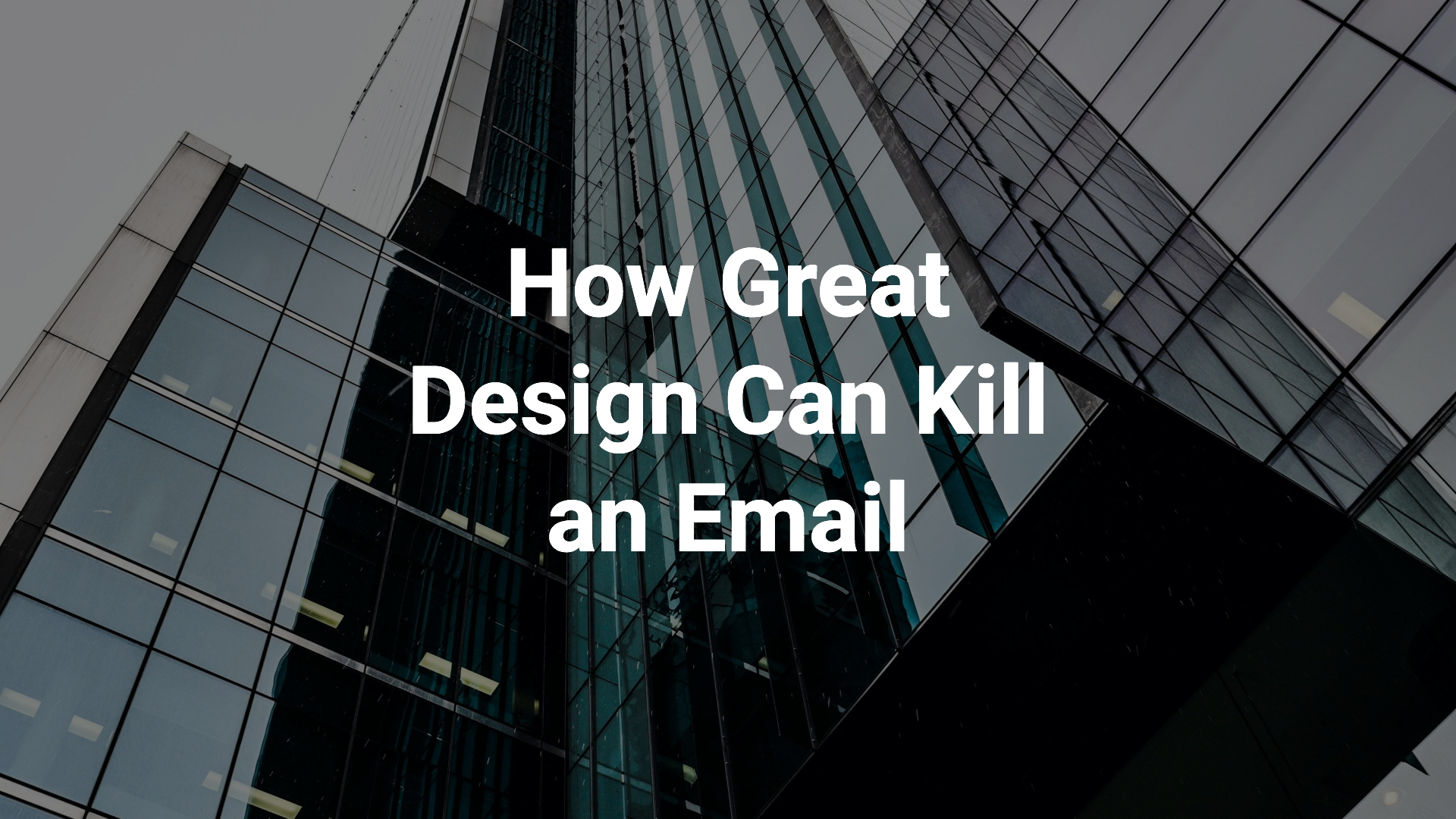Recently I’ve noticed a trend in emails coming from technology companies: big, heavily designed email headers. At first glance, you wouldn’t think this trend was a bad thing. After all, strong visual design can be captivating — and of course, who wouldn’t want their email to be captivating?
But as I’ve been consulting on the strategy of more of these projects for mid-market and large companies, I’ve had to warn more senior leaders away from these heavily designed emails …
because they can do more harm than good.
Let’s break this down so you can see why.
From a copywriting standpoint, an email is made up of two distinct parts, each of which has a unique and important job — and each of which is reliant on the other for success.
The first part is the subject line. The subject line’s only job is to convince the reader to open the email. That’s it. Email open rate is the metric of success here.
The second part is the email body copy. The email body copy’s job is a bit bigger: It must fulfill the promise of the subject line, keep the reader engaged at least up to the CTA (call to action), and move the reader enough to act on the CTA. There is more to say here in regard to taking the reader on a journey — but for the purpose of this argument, that is the sum of the body copy’s job. In most cases, the click-to-open (CTO) rate is the metric of success here — but in some cases, it’s response rate (how many people hit the REPLY button and sent a message back).
If the subject line fails, the email recipients don’t open the email and the body can’t do its job.
If the email body copy fails, it doesn’t matter how great the subject line was.
(In fact, failure of the body copy to do its job can indicate your subject line was click-bait — the subject line made a promise the email body didn’t fulfill.)
When they work together — when an effective subject line leads to effective email body copy — the result is satisfied readers taking action.
A big, visually grabbing header graphic at the top of an email creates separation between the subject line and the email body.
When a reader opens the email, the email body copy has an instant to begin to fulfill the promise of the subject line — which is its first job. If it fails its first job, there’s little hope it will complete its other jobs to keep the reader engaged and move them to action.
All it takes an instant for a reader to open the email, see a big graphic and decide that the email isn’t worth scrolling to read. It’s a tiny bit of friction in the body copy, but it can completely derail the reader’s experience.
There are exceptions, of course. For example, if your subject line clearly talks about a big event coming up, and the graphic at the top of the email body is a banner for that event, the reader won’t be surprised by that. They’ll likely scroll to get more information about the event because they opened that email with that purpose in mind.
For the most part, though, I have been advising my clients to avoid heavy graphics at the top of the email. If they want to use a designed template, I’m suggesting a small, unobtrusive company logo or other brand identifier at most. (In fact, emails with no design, and with an individual’s name versus a company or team name in the sender field, appear more personal and can work better to connect with readers — but that’s an article for another time.)
Copy has a job to do. When we remove friction from the reading experience, we give the copy a better chance to do its job.
